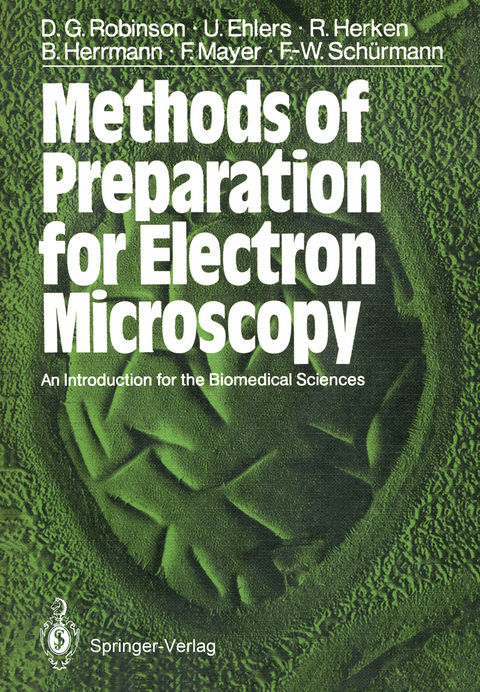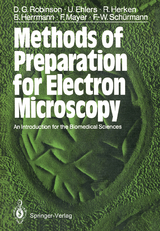Methods of Preparation for Electron Microscopy
Springer Berlin (Verlag)
978-3-540-17592-6 (ISBN)
1 An Introduction to Electron Microscopy (EM).- 1.1 Imaging Methods in Electron Microscopy.- 1.2 Preparation Procedures in TEM.- 1.3 Imaging Problems.- 1.4 Support Films.- 2 Methods for TEM.- 2.1 Fixation, Dehydration and Embedding.- 2.2 Ultramicrotomy.- 2.3 Macromolecular EM.- 2.4 Immunoelectron Microscopy (I EM).- 2.5 Autoradiography.- 2.6 Freeze (Fracturing) Etching.- 3 Methods for SEM.- 3.1 Conventional Methods of Preparation.- 3.2 Storage of Specimens.- 3.3 Demonstration of Surfaces via Replicas and Casts.- 3.4 Visualization of Internal Surfaces Through Sectioning and Dry-Fracturing (Dry-Cleaving).- 3.5 Element Analysis.- 4 Evaluation of Micrographs.- 4.1 Morphometry.- 4.2 Averaging and Image Reconstruction.- Appendix: Buffers in Electron Microscopy.
| Erscheint lt. Verlag | 12.6.1987 |
|---|---|
| Übersetzer | David G. Robinson |
| Vorwort | K. Mühlethaler |
| Zusatzinfo | XVIII, 190 p. |
| Verlagsort | Berlin |
| Sprache | englisch |
| Maße | 170 x 244 mm |
| Gewicht | 439 g |
| Themenwelt | Naturwissenschaften ► Biologie ► Mikrobiologie / Immunologie |
| Naturwissenschaften ► Biologie ► Zellbiologie | |
| Schlagworte | Antibody • Cell • Cell Culture • electron microscopy • Electron optics • Elektronenmikroskopie • Microscopy • Nucleic acid • Präparieren • resistance • Thin section • tissue • Transmission Electron Microscopy |
| ISBN-10 | 3-540-17592-X / 354017592X |
| ISBN-13 | 978-3-540-17592-6 / 9783540175926 |
| Zustand | Neuware |
| Haben Sie eine Frage zum Produkt? |
aus dem Bereich




